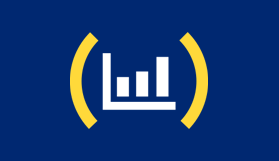EQT Monthly Market Summary September 2025
MARKET SUMMARY
Australian Equities lagged –In local currency, the ASX200 (-0.78%) underperformed global equities (MSCI World ex Aust) +3.13% (USD) and +1.99% (AUD). US and Asian markets drove gains in global equities. The “Magnificent 7” rose 9% and the Japanese Nikkei rose 5.2%. For the second month in a row, small caps outperformed strongly in Australia driven by the small resource and defence-related companies.
Sector performance – The best performers for the month within the ASX200 were Materials (+6.1%) and Utilities (+0.7%). The Materials outperformance was driven by the gold sector (+25%). Sector losses in Australia were broad-based. The worst performers were Energy (-9.8%), Consumer Staples (-4.4%) and Healthcare (-4.1%). The Energy sector was negatively impacted by the withdrawn takeover offer for Santos (STO). Globally, Tech, Communication Services, Materials and Consumer discretionary were all strong.
Australian Property securities (AREITs) fell 3.1% – Higher bond yields and expectations of less rate cuts weighed on performance. Industrial REITs underperformed, while fundamentals for retail and residential REITs improved (better consumer spending and housing market data). Globally, REITs rose 1% in September.
AU Bond yields roseAustralian bonds (Bloomberg AusBond Comp 0+Y index) rose 0.1%. Australian 10-year bond yields rose 2.3bps to 4.3%, while US 10-year bond yields fell 8bps to 4.15%. The yield curve flattened in Australia as markets priced in less near-term rate cuts.
Australian credit market rose marginally– The domestic market continues to see spread compression across the board on the back of solid economic growth, rate cuts and increasing investor demand. The credit market has seen strong demand in the BBB cohort as the search for higher yielding securities continues. The UBS Tier (first Tier 1 issued by a foreign bank) was well received and could see other offshore banks issuing in Australia.
Global economy focus was on the Fed– The US labour market continued to soften. The unemployment rate rose to 4.3% allowing the US Federal Reserve to cut rates 25bp to 4-4.25%. Headline inflation (CPI) rose 2.9% year-on-year. US consumer confidence softened, and the housing market remains weak. A US government shutdown loomed at the end of the month. The European Central Bank left rates unchanged at 2%. Chinese data remained flat / subdued.
Australian economy – As expected, the RBA kept rates on hold at 3.6%. The market is now only assuming an 80% chance of one more rate cut locally. August CPI data was higher than expected (+3% year-on-year). The unemployment rate held steady at 4.2% despite slowing employment growth and falling job vacancies. Consumer and business confidence remains soft. Credit growth strengthened, house prices rose 0.9% (month-on-month) and auction clearance rates rose to four-year highs (77.9% combined capital rate) as lower interest rates and government initiatives buoyed demand. The AUD/USD rose 1.1% to 66.13c. Year-to-date the AUD is up 6.9%.
Precious Metals were the standout in commodity – Gold jumped 12%, Silver rose 15% and Platinum soared 17%. Fed easing, concerns about Fed independence and international investors diversifying assets were the key drivers. The LME Base Metals index rose 3.1%, with copper rallying 5.2% after a major producer halted production post a mud slide. Oil fell 2.6% to US$62.40/bbl, while bulk commodities also marginally fell.
Earnings and valuations – ASX200 consensus earnings revisions for the broader market were revised down marginally during the month. Globally, earnings expectations rose 1.4%. ASX200 12-month-forward (12MF) Price-earnings valuations (19.8x) remains elevated versus historic levels. The ASX200 12MF dividend yield is 3.3%.



